Arrival
Here we have a pleasant carriage rental trip, exploring and photographing the Aran Islands.
Here we have a pleasant carriage rental trip, exploring and photographing the Aran Islands.
Join me on a journey through Inishmore, Galway Bay on a horse-drawn carriage. We’ll see a ruined church, horse pasture, and iron age fort, Dun Aengus, with reflections on the word ‘riven.’
Thrifty
We continued down the half mile “Sallyport” footpath, marked in red on the Google Earth view provided at the end of this post, along shoreline cliffs to find these croppings of Sea Pink on jagged rocks.
Oddly, the jags being perfect places for Sea Pink to perch. Scientific name, Armeria maritima, and also known by Thrift or Sea Thrift, a reason these evergreen perennials are found on the obverse of the British Three Pence coin issued 1937 – 1952. Thrifty can mean to buy a lot for a little money — three pence is very little money.
Click any pic for a larger view, in a new tab, or a slide show. When using WordPress Reader, you need to open the post first.
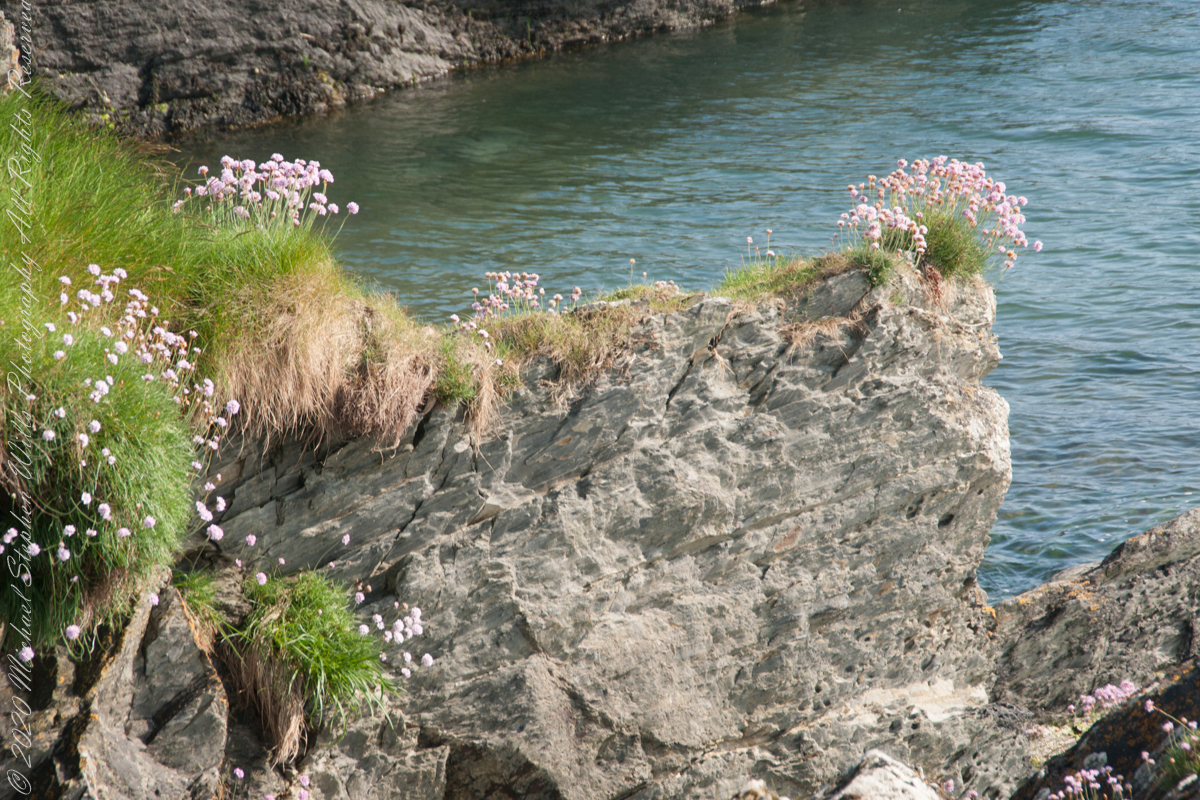



Another sign informing hikers of the view.

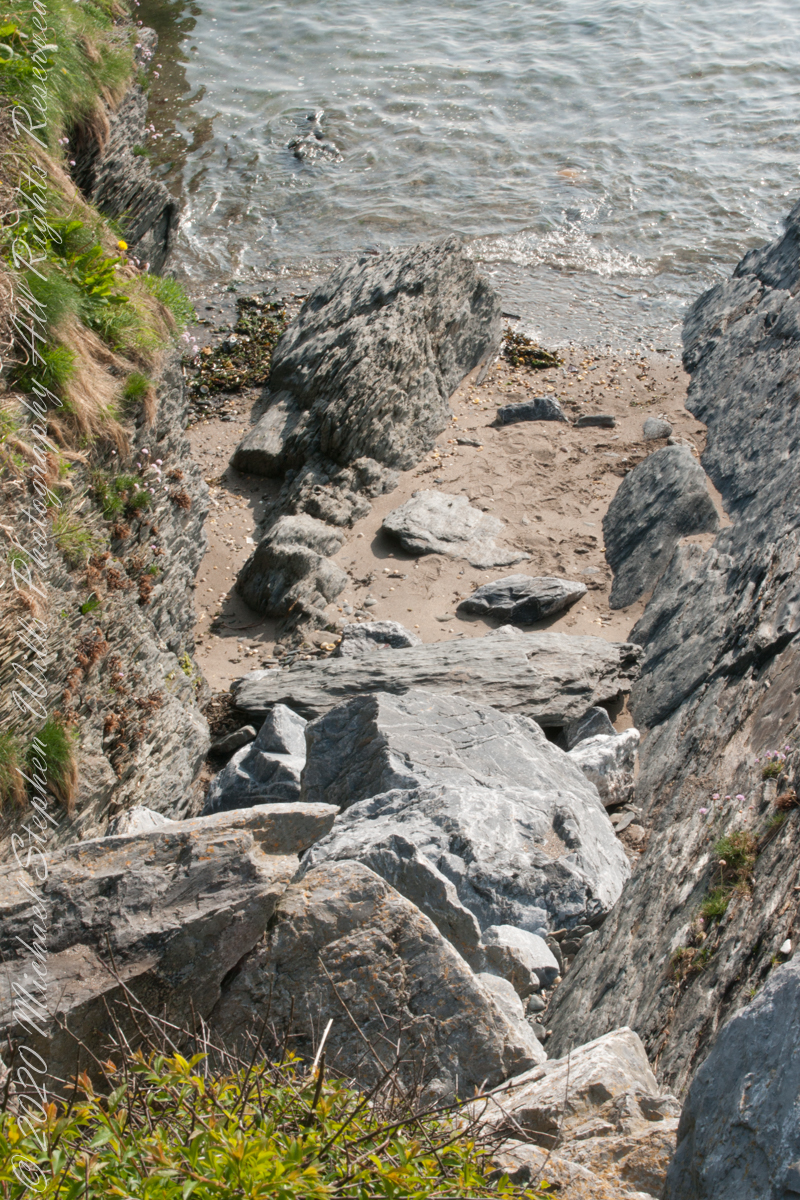
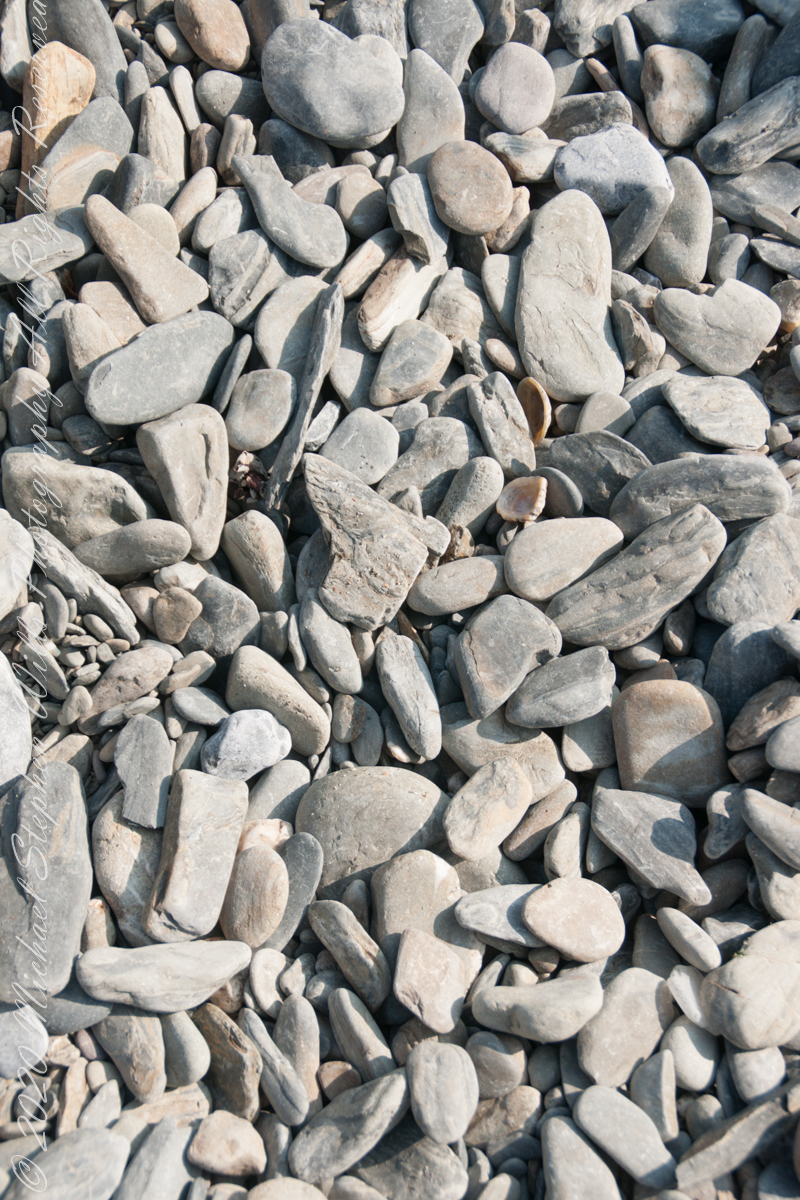
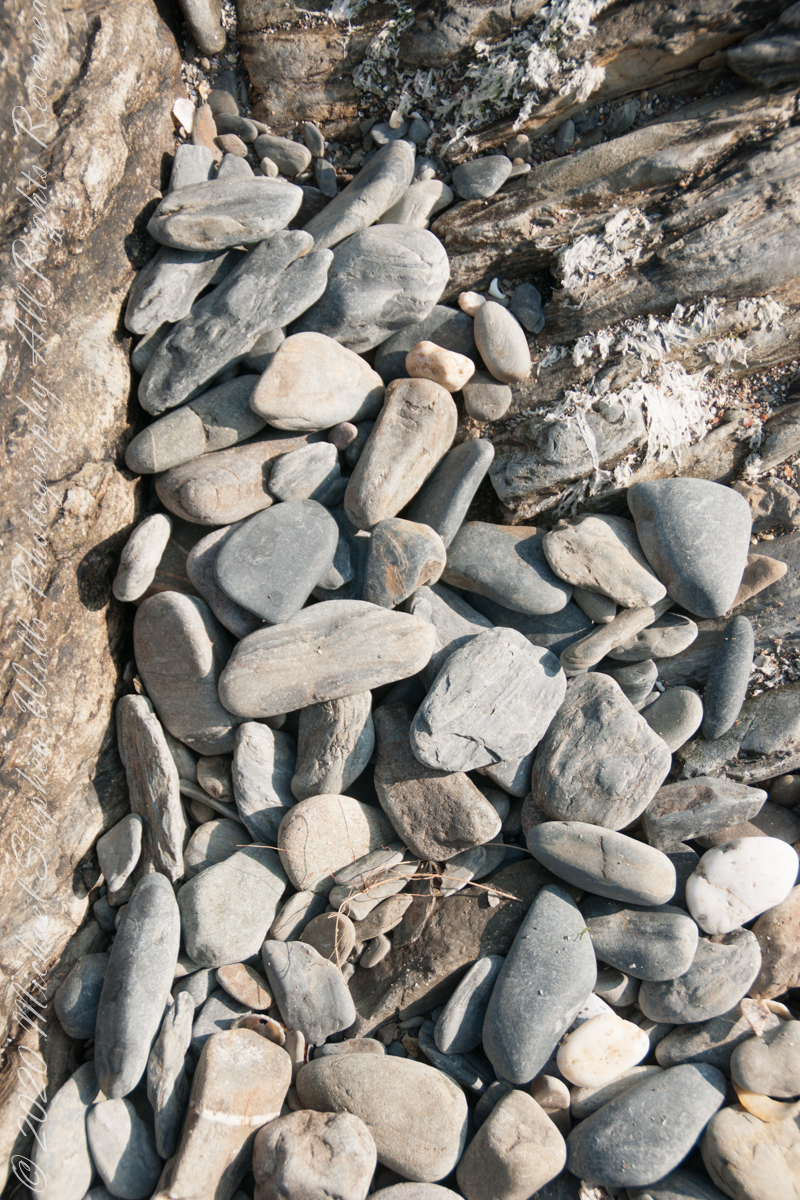
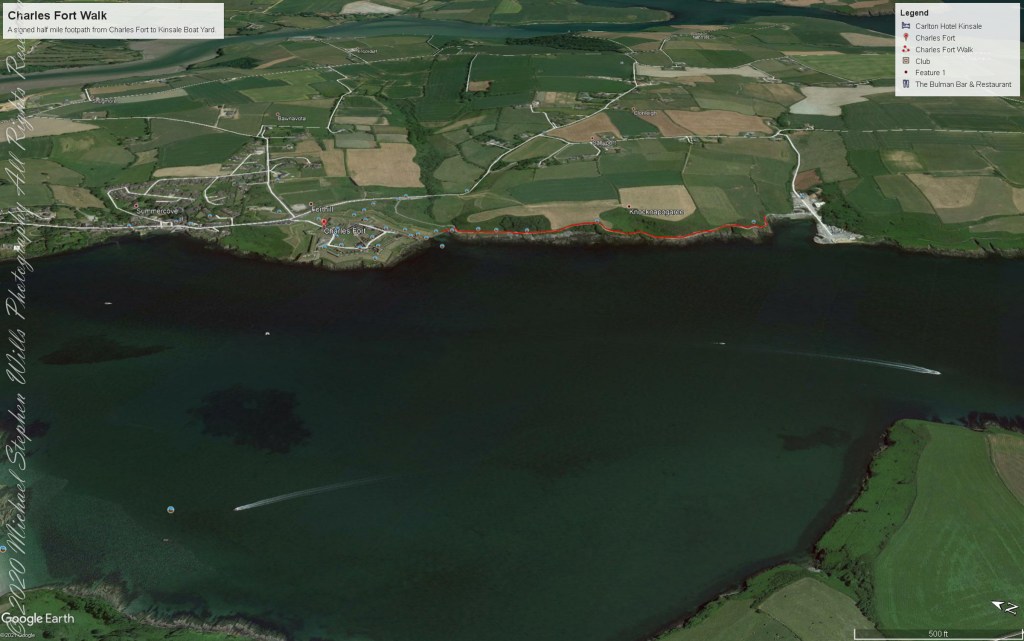
“Armeria maritima” – wikipedia
Views of Celtic Sea
A half mile footpath, marked in red on the following Google Earth view, leads from the Charles fort sallyport, along the shoreline cliffs, surmounted by working farmland and looks toward the Celtic Sea.
To “sally” is to suddenly charge out from a besieged place against the enemy. The word is also used as a noun. It can also be used to describe our walk, as a sally to an unusual place.

Here is a view of the Celtic Sea from the Sallyport
From Wikipedia: “The Celtic Sea receives its name from the Celtic heritage of the bounding lands to the north and east. The name was first proposed by E. W. L. Holt at a 1921 meeting in Dublin of fisheries experts from Great Britain, France, and Ireland. The northern portion of this sea was considered as part of Saint George’s Channel and the southern portion as an undifferentiated part of the “Southwest Approaches” to Great Britain. The desire for a common name came to be felt because of the common marine biology, geology and hydrology of the area. It was adopted in France before being common in the English-speaking countries; in 1957 Édouard Le Danois wrote, “the name Celtic Sea is hardly known even to oceanographers.”[3] It was adopted by marine biologists and oceanographers, and later by petroleum exploration firms. It is named in a 1963 British atlas.. A 1972 article states ‘what British maps call the Western Approaches, and what the oil industry calls the Celtic Sea […] certainly the residents on the western coast [of Great Britain] don’t refer to it as such.'”
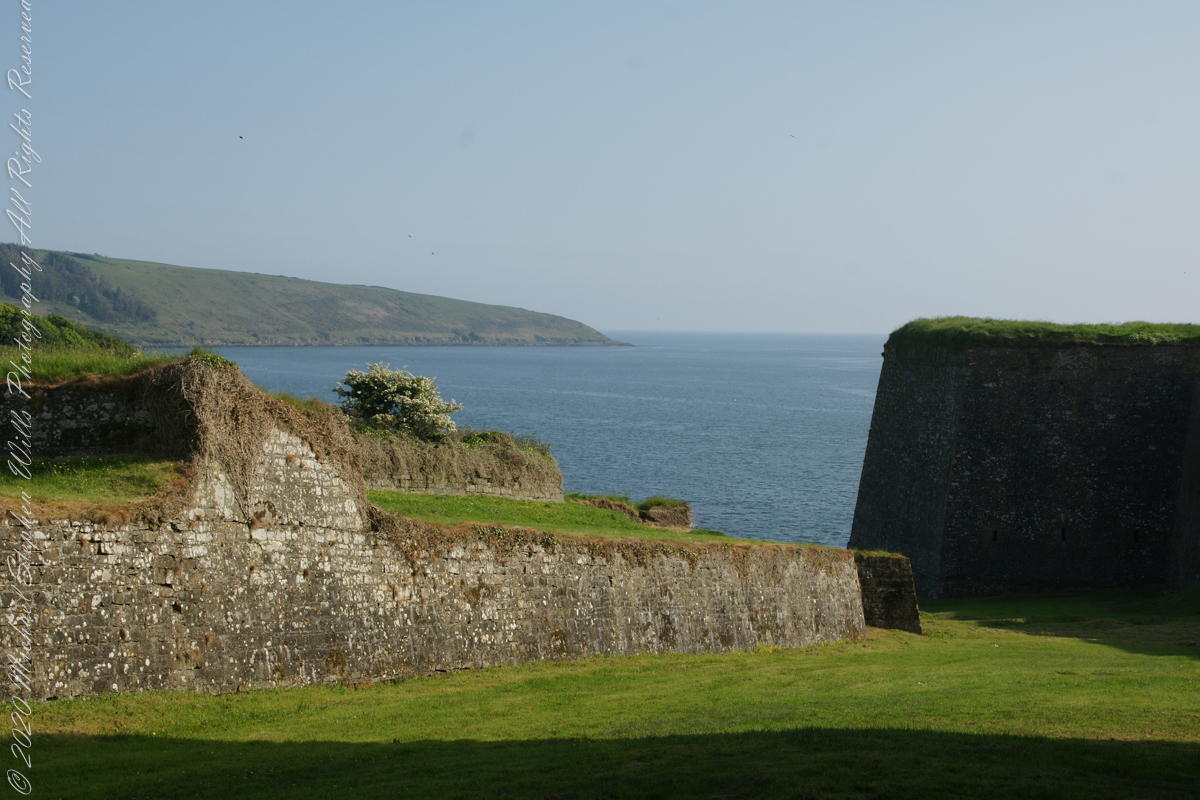
Views of the wall from previous photograph. The vines were separated from roots to preserve the walls, leaving interesting patterns.
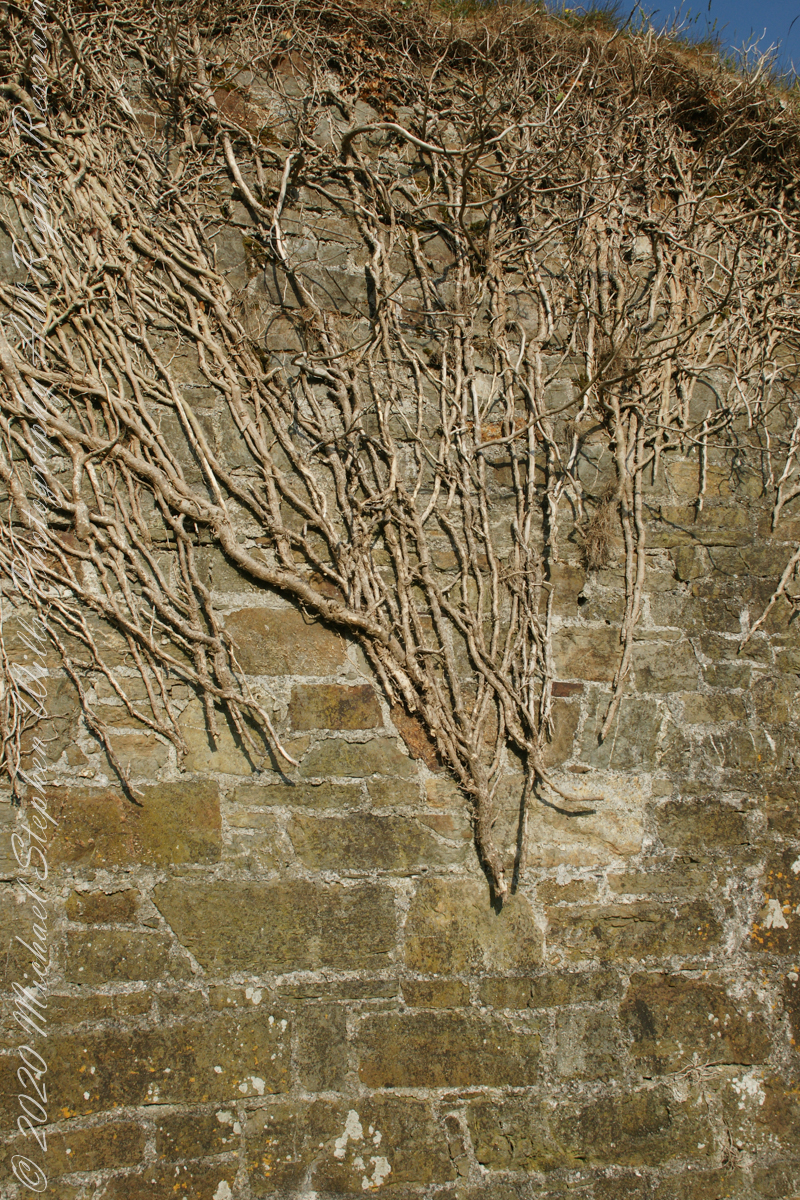
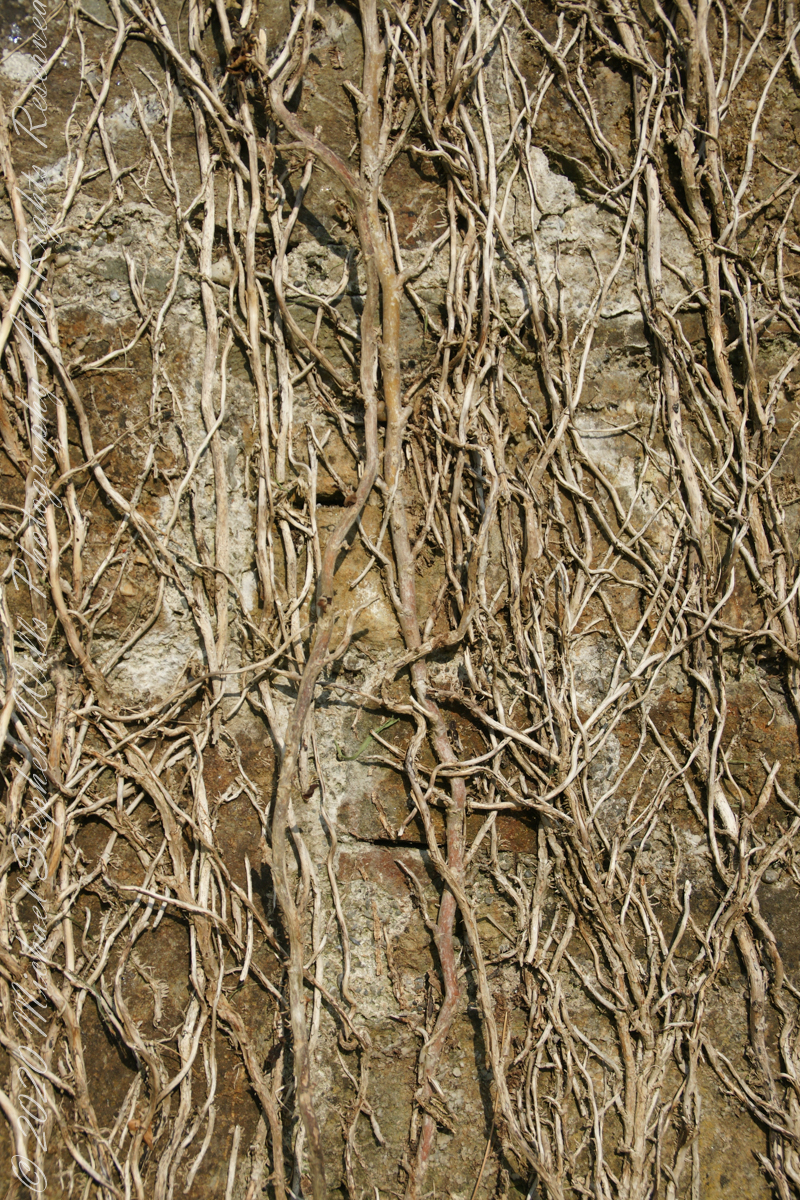
The distant land to the right, beyond the walls, is the Old Head of Kinsale.

Informational placards along the walk give background to the views enjoyed by hikers.
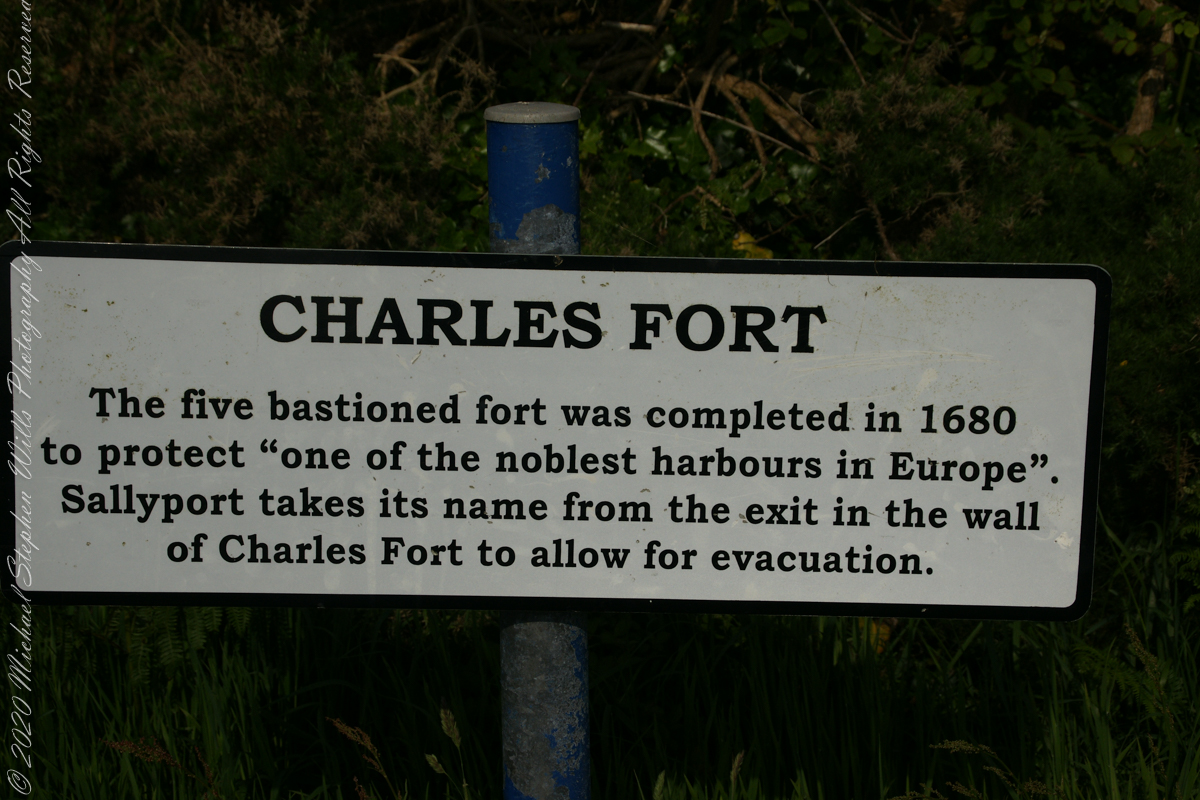
Here is the above view.

Pam, at start of our walk. Poking above the walls is the Charles Fort Lighthouse. “This lighthouse is a directional light marking the way to safe anchorage close to Kinsale. In 1665 King Charles II granted letters patent to Sir Robert Reading to erect six lighthouses on the coast of Ireland, including one at Barry Oge’s castle, near Kinsale later to become Charles Fort. The original structure would have had a coal fire on its roof. In 1810 powers given to the Commissioners for Barracks and others between 1767 and 1806 were all vested in the Corporation for Preserving and Improving the Port of Dublin or the Ballast Board. This board took over the general lighting and marking of the coast when fourteen lighthouses were transferred to it including that at Charles Fort. This lighthouse, built in 1929, is one of the more recent to be found along the coast, with most dating to the nineteenth century. A new mains powered light at Charles Fort Lighthouse was put into operation on the 14 April 2004 marking the end of a long era of gas and oil powered lights in Ireland.” Quote is from the link provided in references.
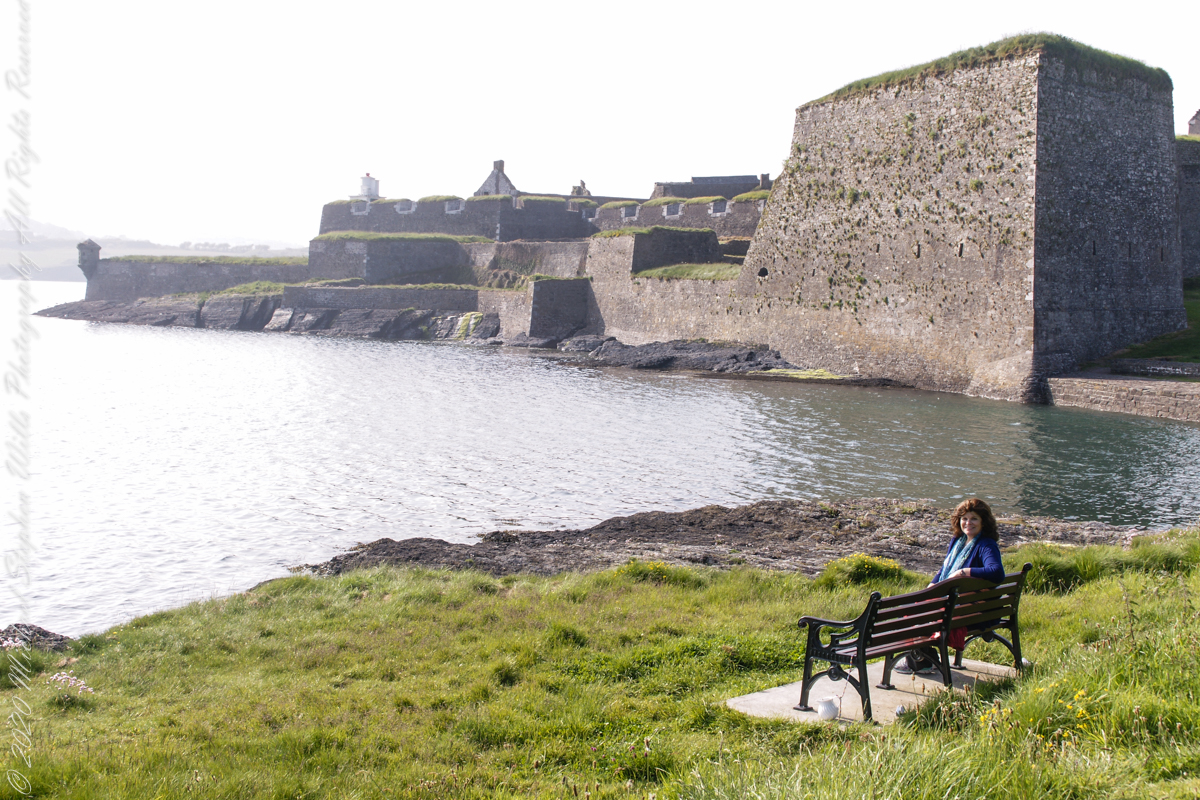
“Celtic Sea” – wikipedia
“Charles Fort Lighthouse” — Charles Fort Lighthouse, FORTHILL, CORK – Buildings of Ireland
flower girls
Arriving at Charles Fort, the “new” fort compared to the “old” James Fort across the cove, late in the day after our walking tour of Kinsale and lunch, the gate to the interior was closed. Pam and I made do with exploring the outer battlements where the citizens of Kinsale were enjoying themselves.
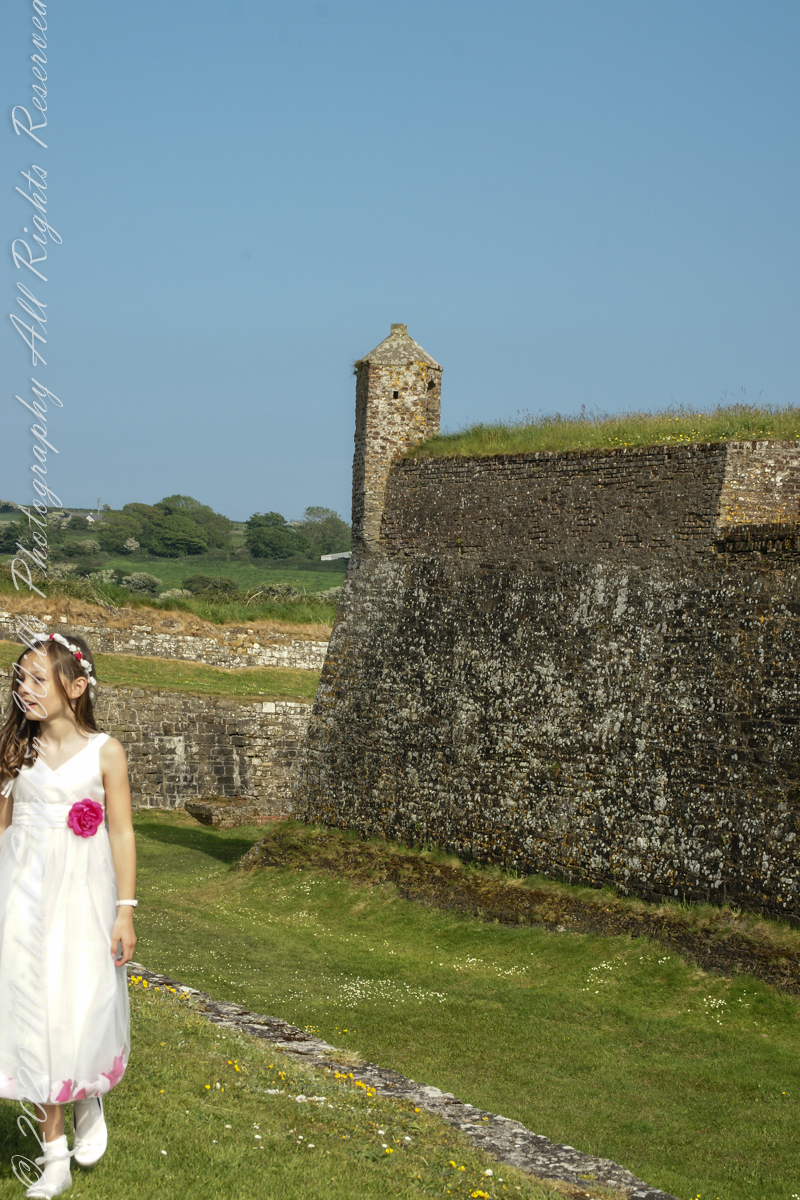
A shortcoming of Charles Fort was the high ground you can see behind the figures. The defenses are strong on the seaward side and open to attack from the land.

Two friends conversing.
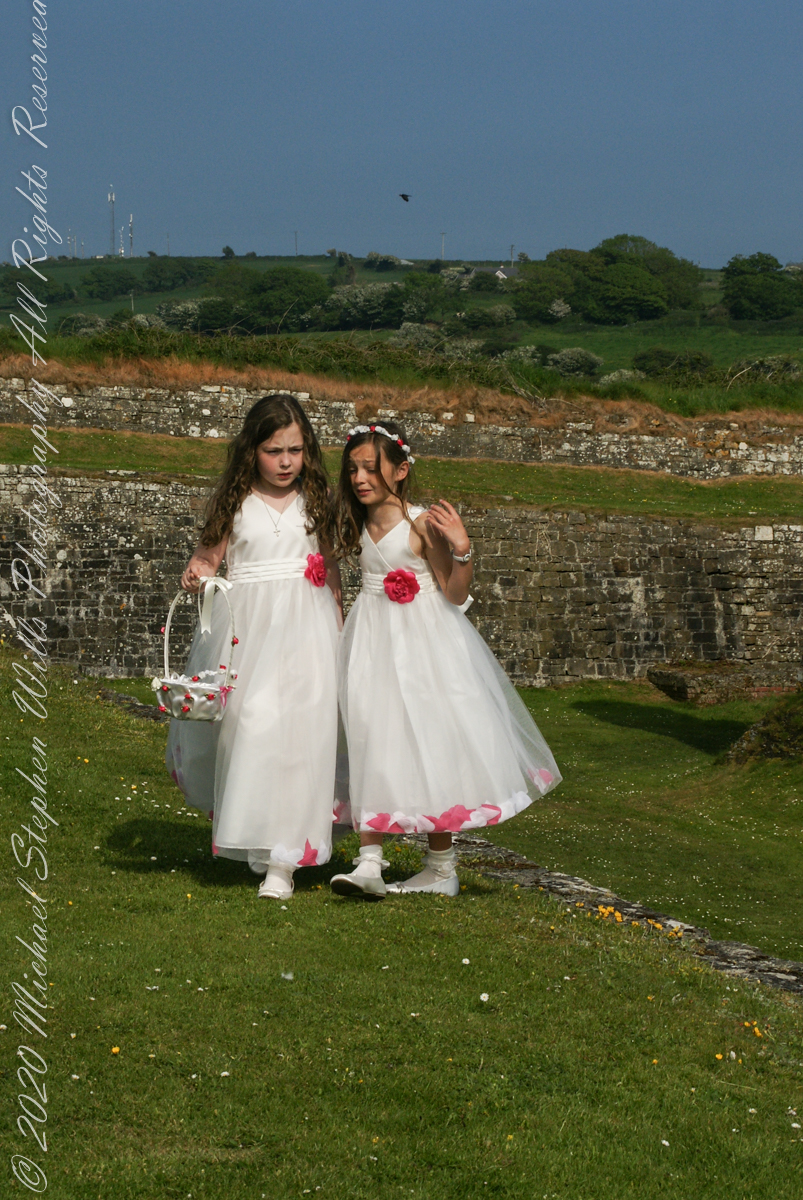
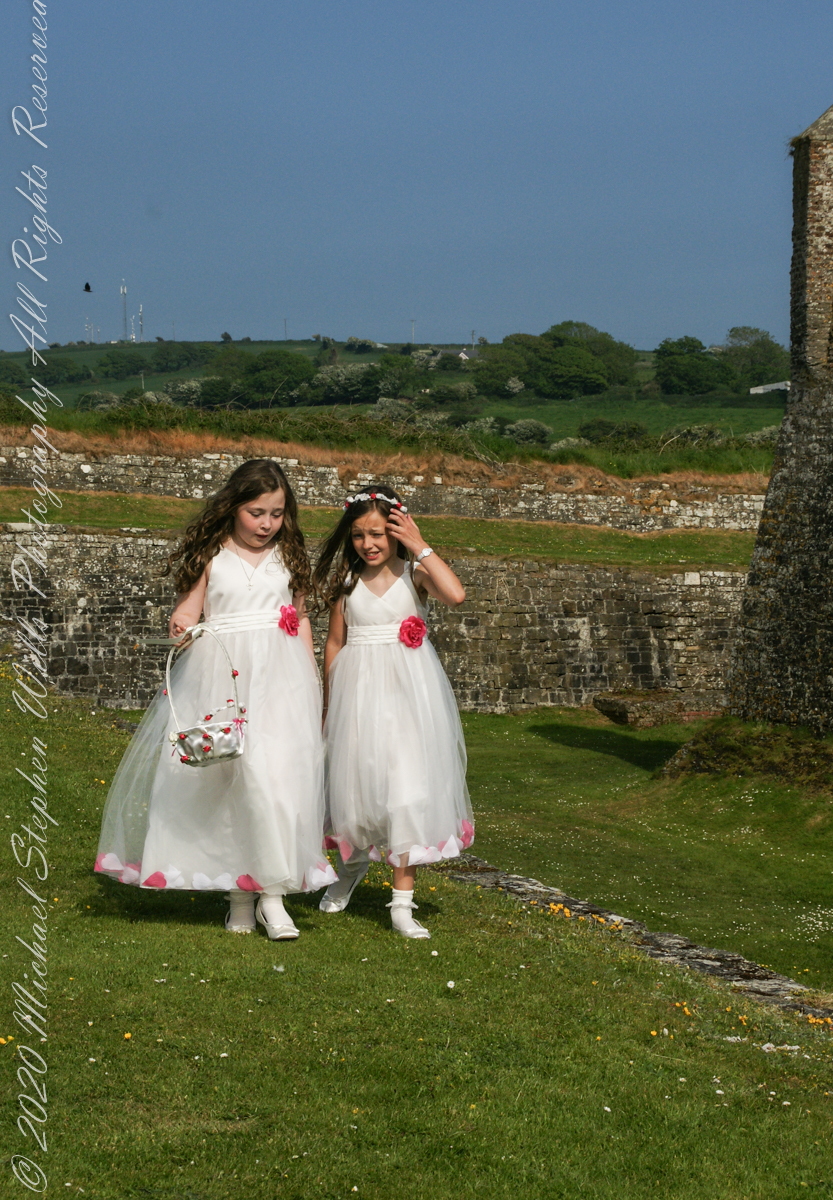
Preparations
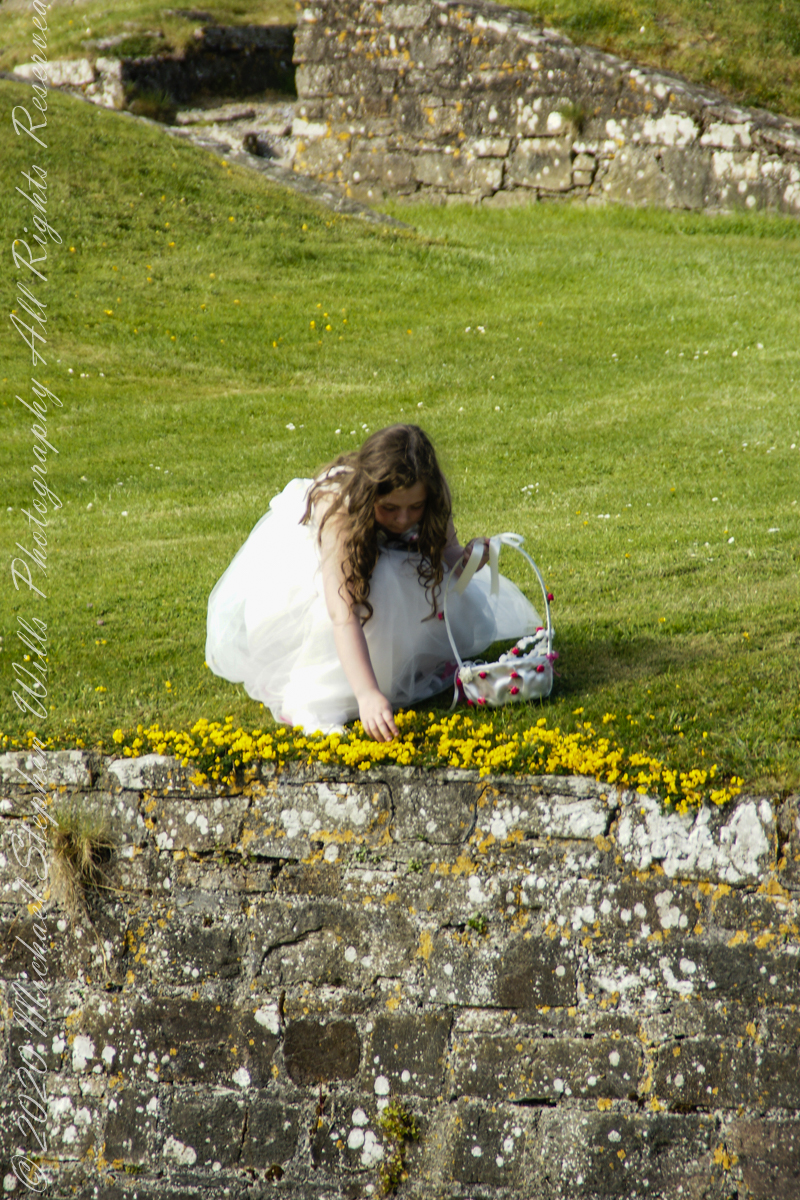
“Hurling and Charles Fort” – wikipedia
echoes across time
After exploring Kinsale town and lunch Pam and I drove two miles, along the east side of the cove, to the ruins of Charles Fort, one of a pair of fortifications protecting Kinsale from seaward attack. The “New Fort,” Charles, faces the “Old Fort”, James, across the cove.
Built in the 17th century on the site of an older fortification, Ringcurran Castle, it is named for Charles II, the English monarch of the time. The fort was burned during by retreating anti-treaty forces in 1922 during the Irish Civil war. It lay derelict until today’s 1971 until now restoration.
Upon our arrival this young man was handling a hurley and sliotar beneath the fort wall, an incarnation of Cúchulainn playing hurling at Emain Macha. From Wikipedia, “Hurling is older than the recorded history of Ireland. It is thought to predate Christianity, having come to Ireland with the Celts. The earliest written references to the sport in Brehon law date from the fifth century. Seamus King’s book A History of Hurling references oral history going back as far as 1200 BCE of the game being played in Tara, County Meath. The tale of the Táin Bó Cuailgne (drawing on earlier legends) describes the hero Cúchulainn playing hurling at Emain Macha.”
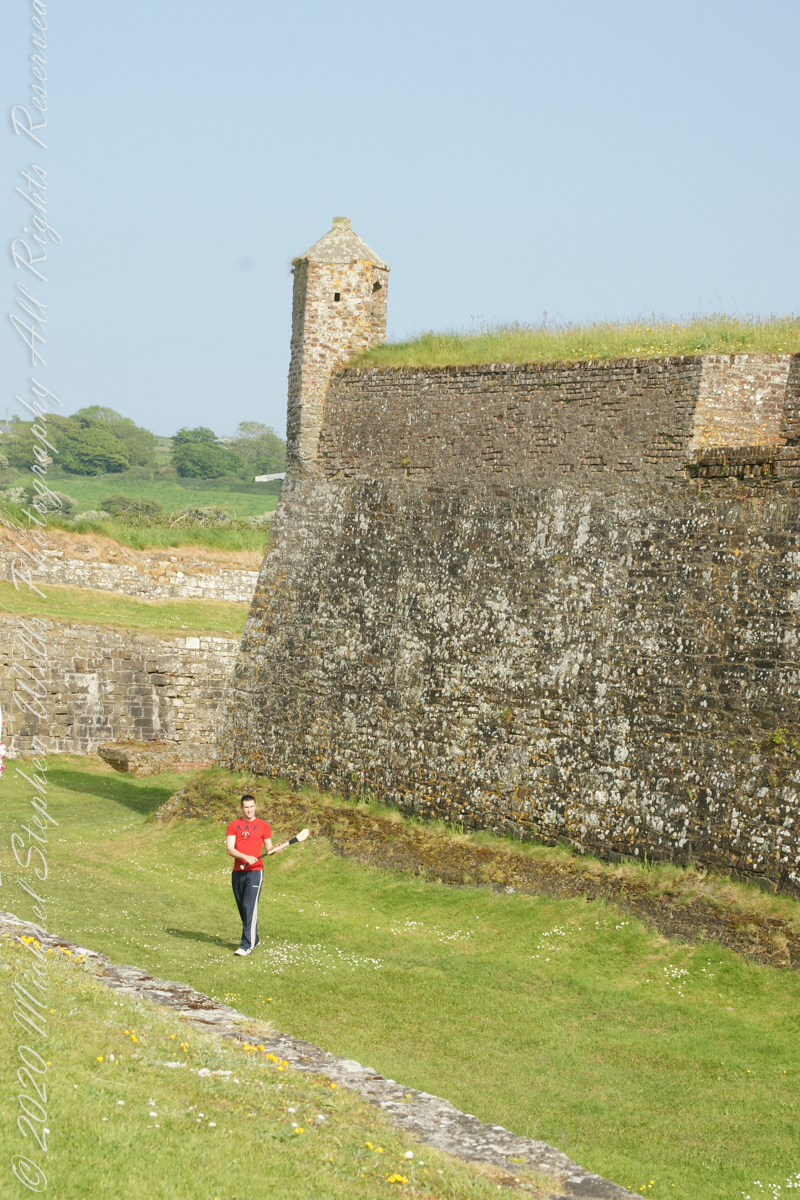
“Hurling and Charles Fort” – wikipedia
along the River Bannon
The tenth and final of a series of idiosyncratic posts from a walking tour of Kinsale by Dermot Ryan. My Sony Alpha 700 captured the events back in May 2014.
We are headed toward lunch along the River Bannon. The Kinsale Chocolate Boutique, Exchange Buildings, 6 Market Square, did not survive the pandemic. This iconic corner is now the First South Credit Union (sigh).
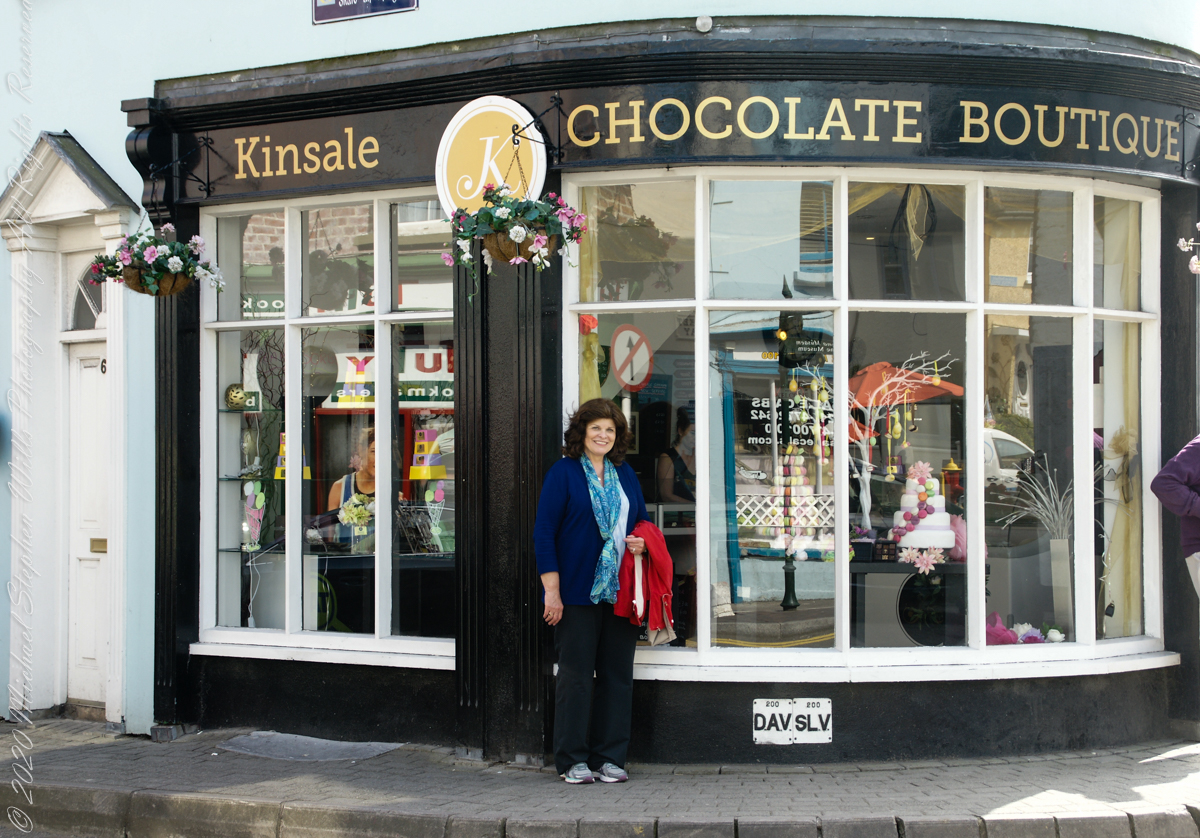
With headquarters in Dublin, the Irish Red Cross provides in Ireland (click the links to learn more):
PRISON PROGRAMME – COMMUNITY BASED HEALTH & FIRST AID
EMBLEMS OF THE RED CROSS MOVEMENT
INTERNATIONAL HUMANITARIAN LAW
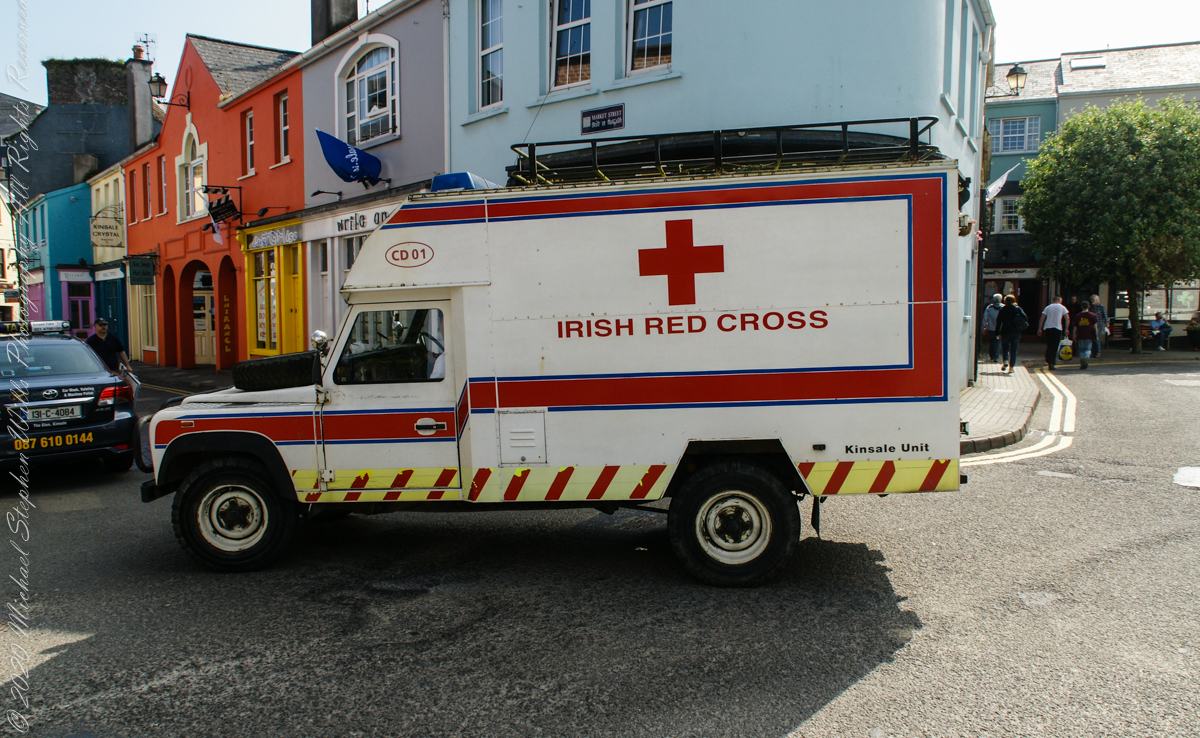
Come out of the center town to walk along Pier Road, River Bannon on its way to the harbor, on one side, town parks on the other.
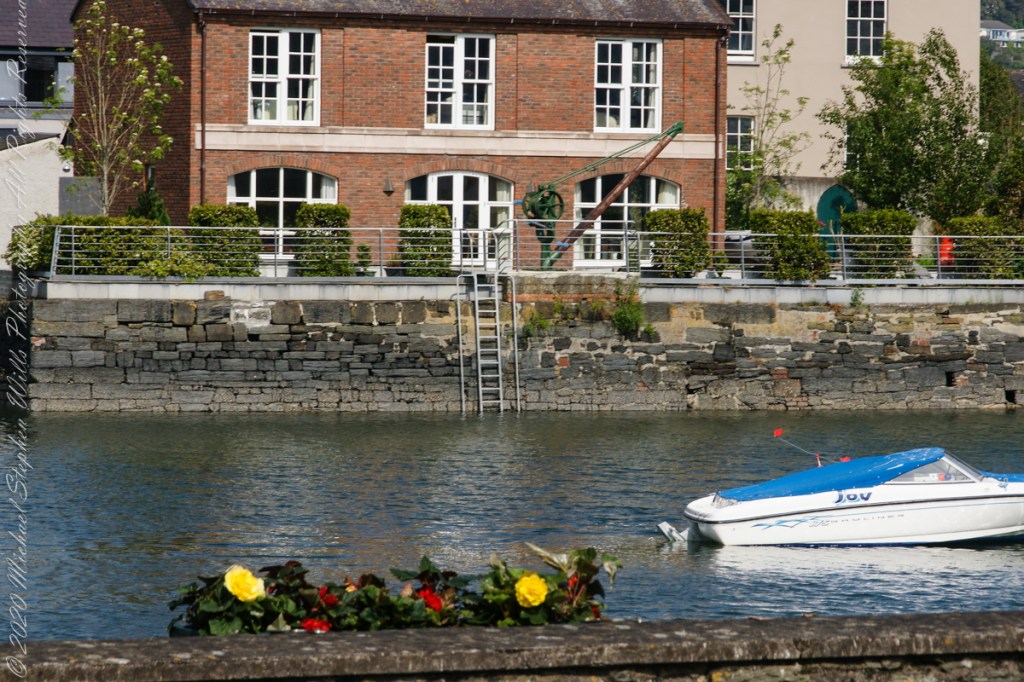
Across from Kinsale Town Park rises this Tall Ship mast and other memorabilia from Kinsale’s maritime heritage.
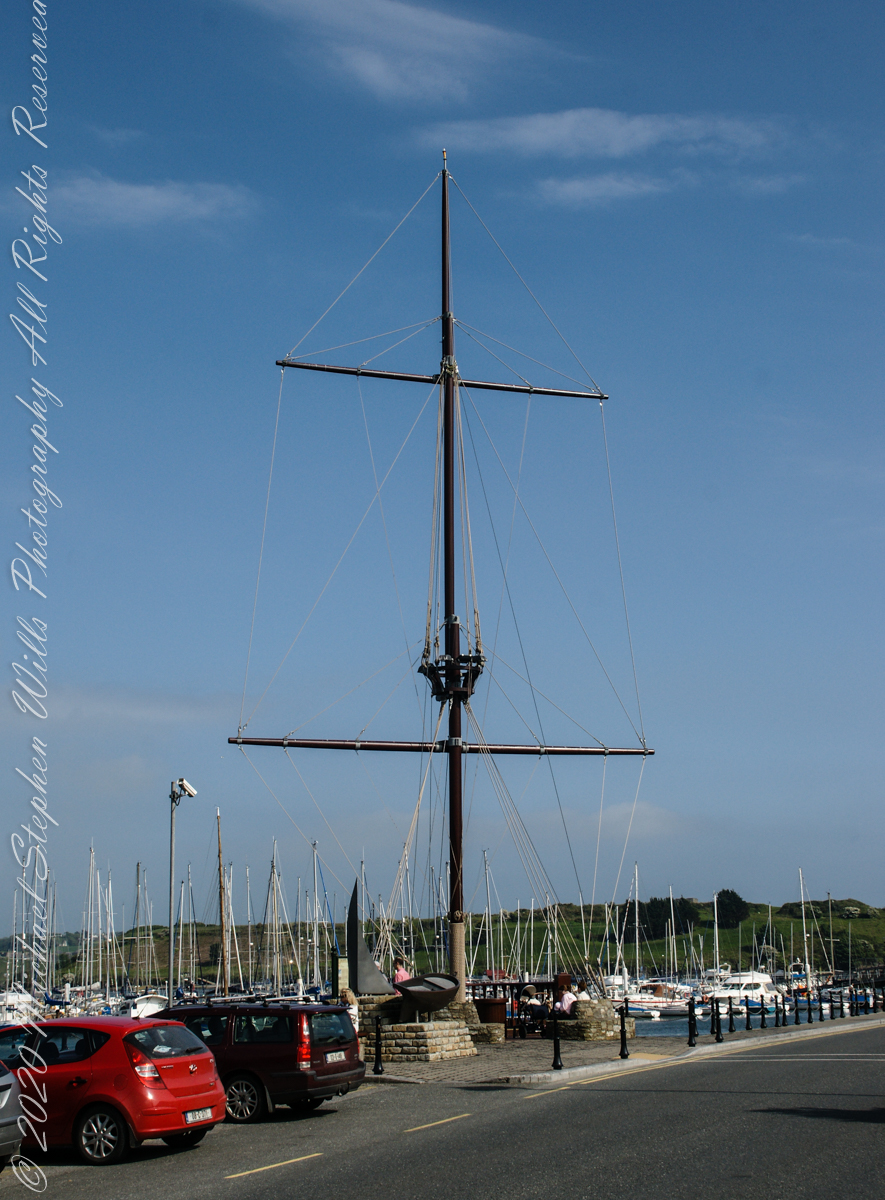
A few hundred feet away are moorings for the Kinsale Yacht club, ” located in Kinsale, County Cork lies just 120 nautical miles from Wales, 240 from North West France and only 500 from the Galician Coast of North Spain. Most significantly it is only 30 km by road from Cork, Ireland’s second city, and between the two lies one the region’s main assets – Cork International Airport – with its daily links to many European capitals. Keelboats and Dinghies. The club runs inshore and offshore races, has active cruising and powerboat sections and most significantly for any real club, a strong and dynamic junior training program. Kinsale Yacht Club and marina are only a few minutes walk from every shop, hotel, pub and restaurant in Ireland’s gourmet capital.” — from the Yacht Club web site.
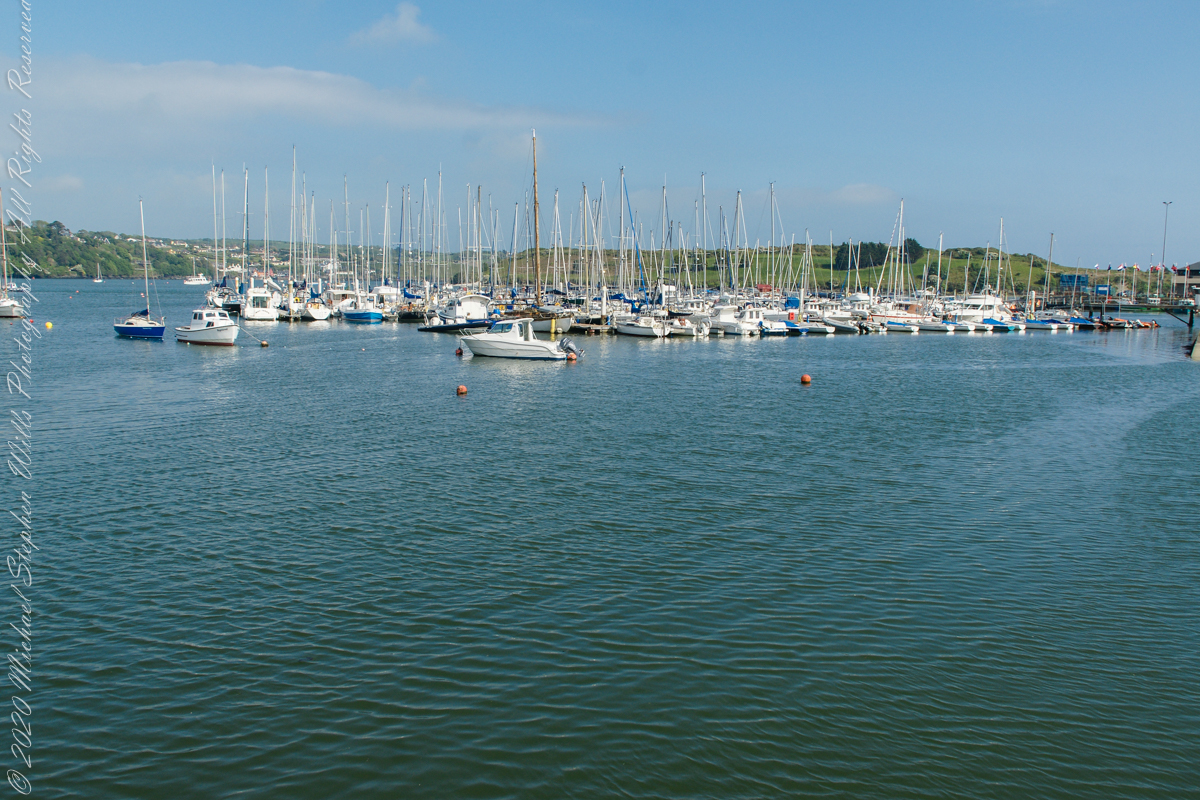
Copyright 2022 All Rights Reserved Michael Stephen Wills
Protected Storage
The ninth of a series of idiosyncratic posts from a walking tour of Kinsale by Dermot Ryan. My Sony Alpha 700 captured the events back in May 2014.
Look closely to see this quote “The Onion is the truffle of the poor.” –Robert J. Courtine. Crackpots was decorated with unusual pottery, a casualty of Covid-19.
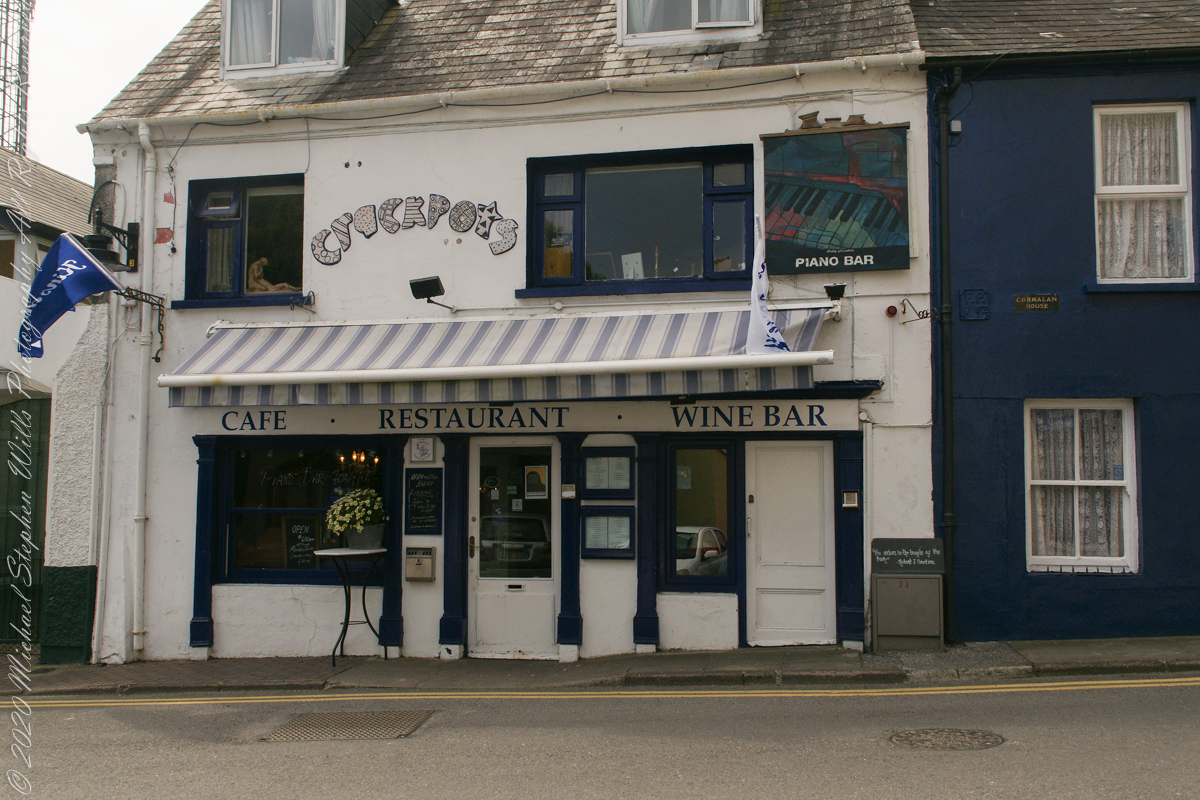
From a placard inside the stone walled “Town Pound.” “The Town Pound was an essential part of the administration of the old town, located near the Market House, the Potato Market and the Broadstone. It had replaced the Old Pound at the top of Barrack Street and was for the care of stray livestock, especially pigs and horses, with a scale of penalties for offenders. The Pounds were always kept as secure places, as shown in the records of the Kinsale Corporation, with an entry of 1673 itemizing a sum of sixteen shillings for the repair of the pound!” By Local Historian, Dermot Ryan.
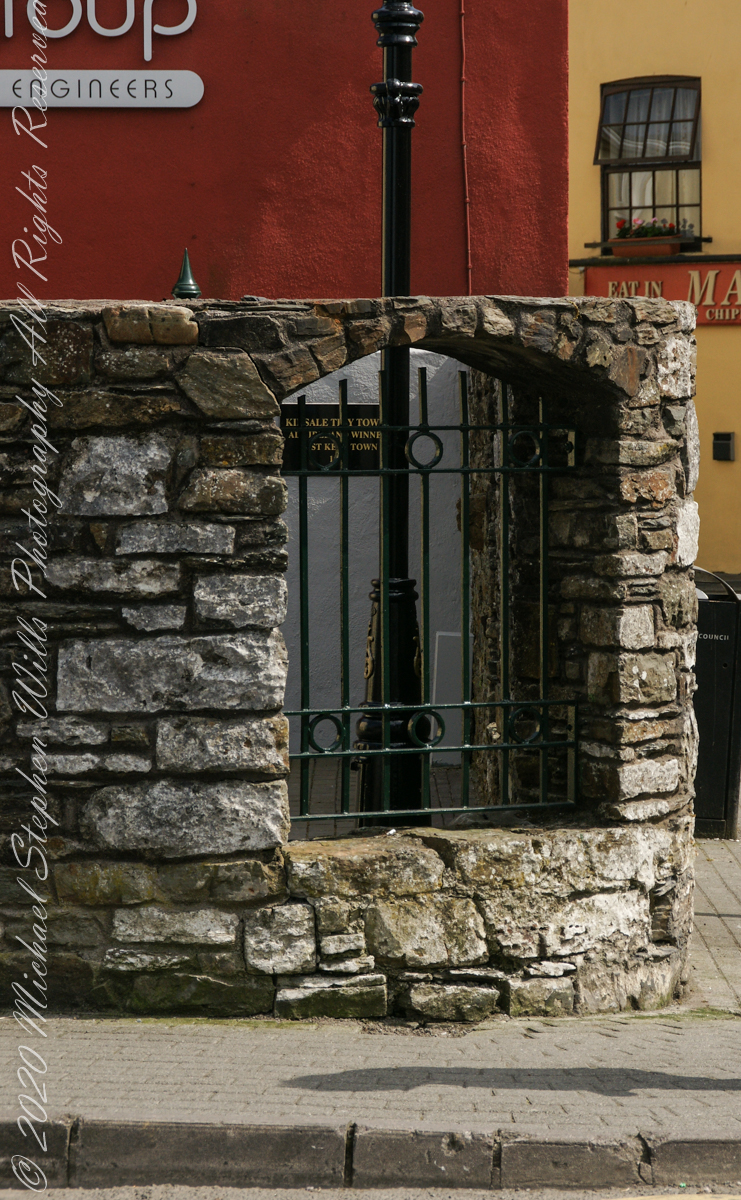
The Tan Tavern is on the other side of Guardwell street, seen here over the stone wall of “The Old Town Pound” historical site.
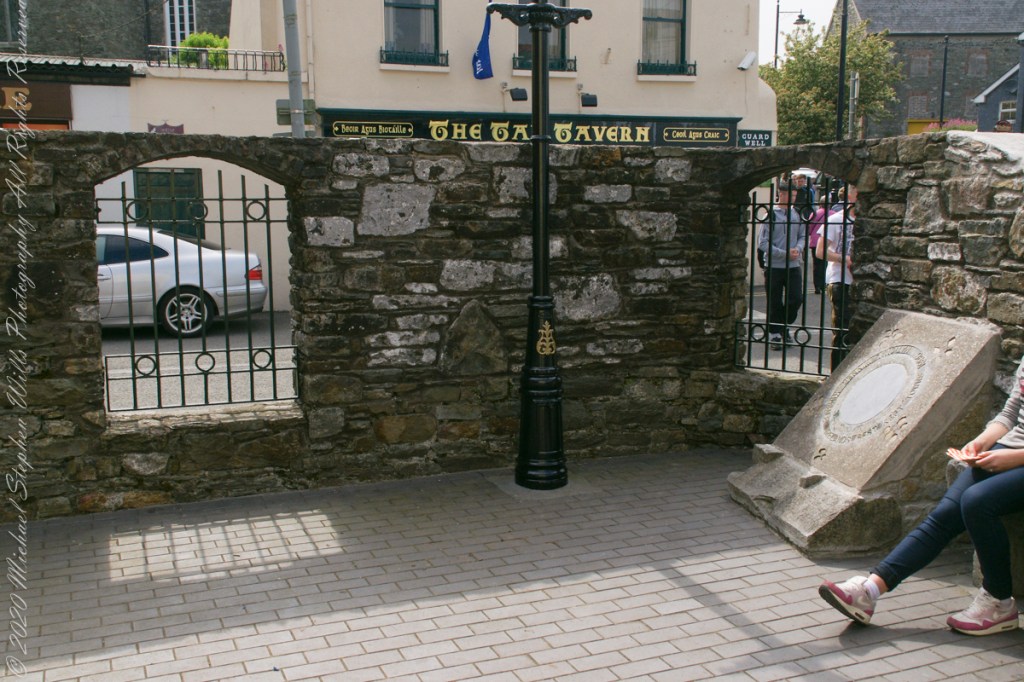
“Kinsale Town Crest
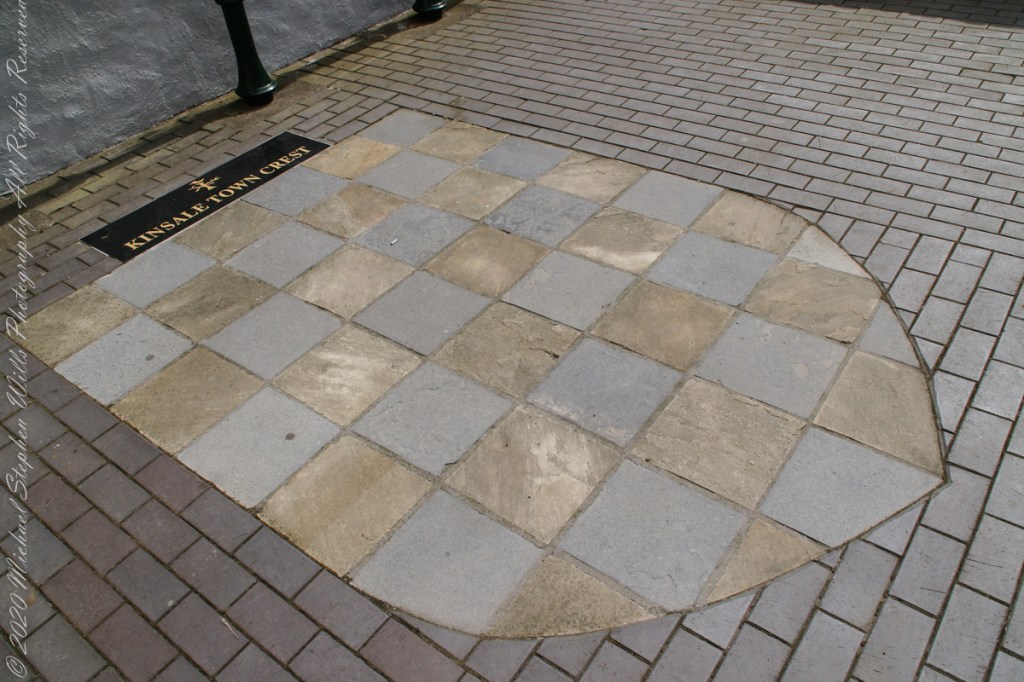
I don’t recall where exactly this quote was placed. It is associated in time with the Town Pound (photo time stamps). Morgan Spurlock of the documentary “Supersize Me” is an American of Irish descent.

Copyright 2022 All Rights Reserved Michael Stephen Wills
An ivy clad nook
The eighth of a series of idiosyncratic posts from a walking tour of Kinsale by Dermot Ryan. My Sony Alpha 700 captured the events back in May 2014.
Ducking into an alleyway with the haughty name, “Chairmans’ Way,” we stepped into a different world.
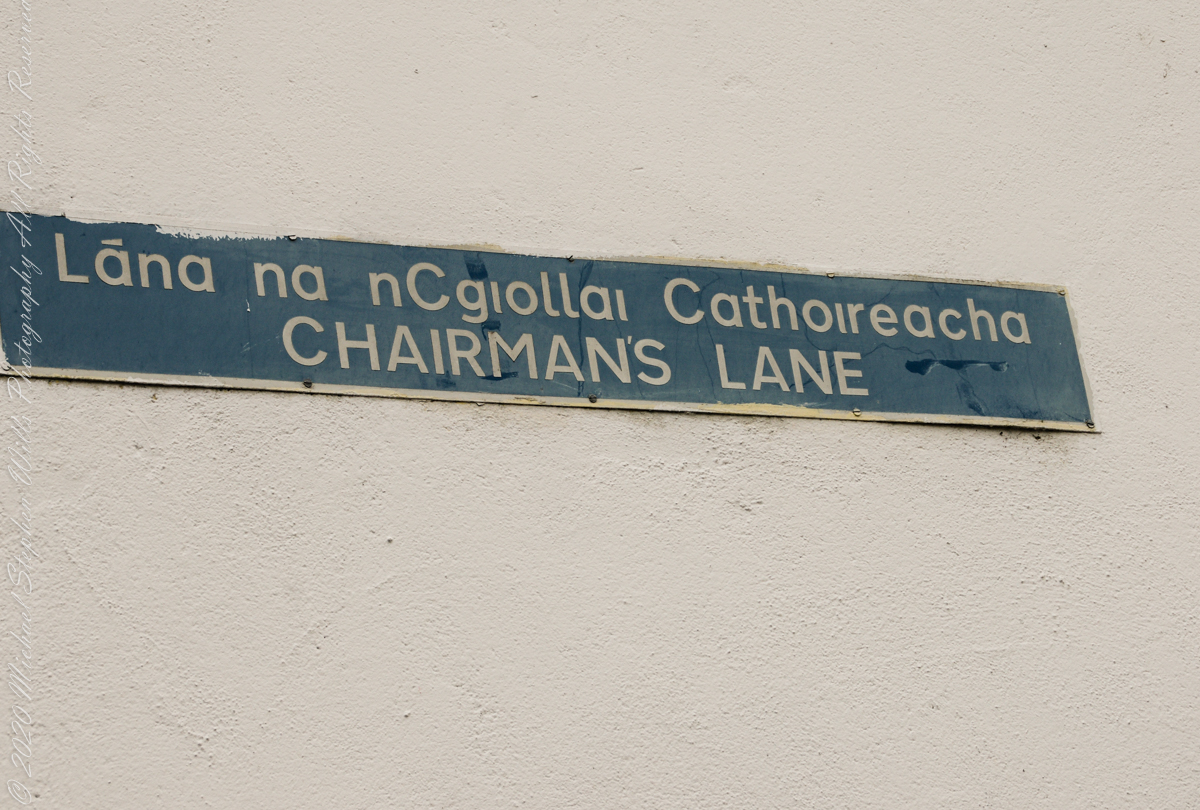
Promising a castle, it delivered these charming offerings.

This doorway, yellow roses (Pam’s favorite) and Calla Lilies.

An ivy clad nook / cottage.
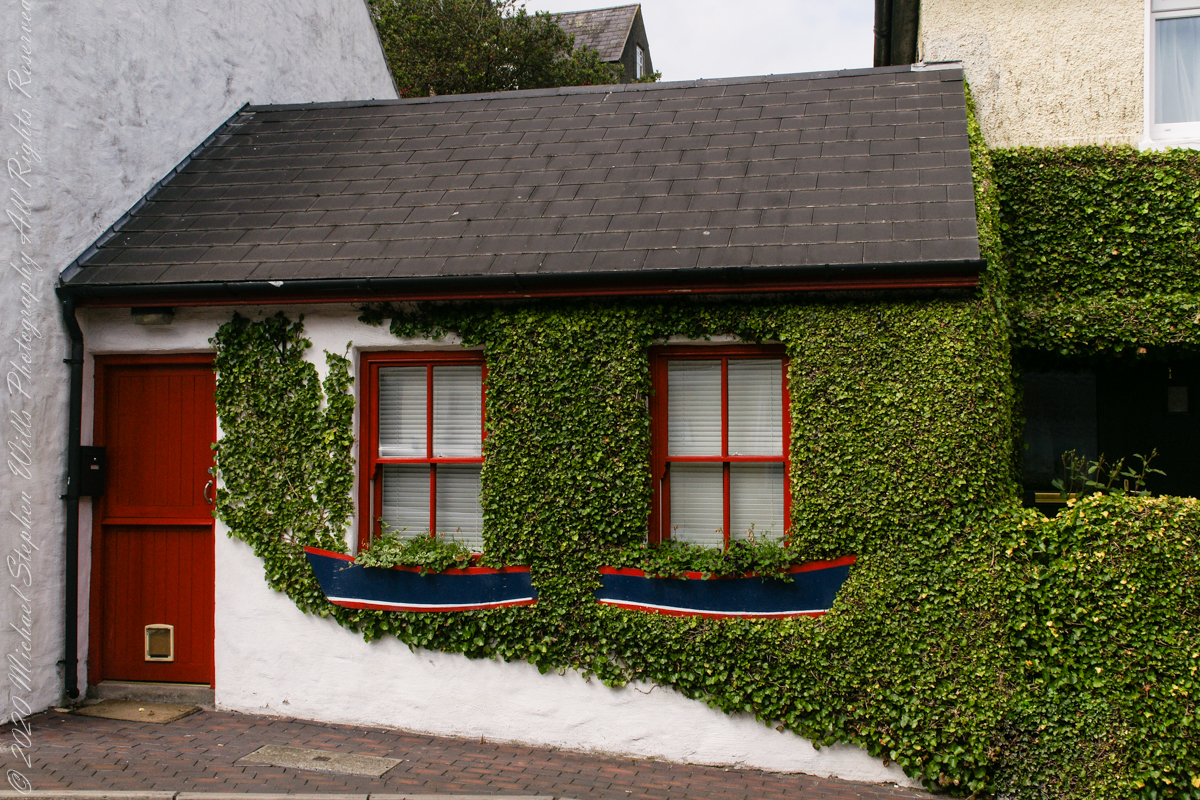
Literary Encouragement
The seventh of a series of idiosyncratic posts from a walking tour of Kinsale by Dermot Ryan. My Sony Alpha 700 captured the events back in May 2014.
So much to see around Newman’s Mall, coming upon “Stone Mad.” Possibly a reference to The Maiden Stone of Scotland. Maiden Stone and Persephone, 8th century AD, and 1961, Shaun Crampton. The salmon-pink granite monolith known as the Maiden Stone was erected by the Picts in the eighth century AD at the time when Christianity was filtering into the north-east. It bears, Janus-like, a series of vivid symbols, carved in relief, and, on the other face, a round-headed cross, set between a possible cavalry scene and a great roundel filled with interlace. The symbols, which are vigorously carved in relief and include a beast or dolphin, mirror and comb, look back to the powerful range of animal and object symbols used as a kind of heraldry on memorial stones in the two previous centuries. The cross side indicates its use as a preaching site during the conversion of the Picts. The notch out of the northern edge of the stone has fed a legend concerning the daughter of the laird of Balquhain who was baking bannocks on her wedding day and bet a stranger that she could finish her task before he had built a road to the top of Bennachie, ‘ere she would become his own’. Being the Devil, he won: she took to her heels and, in answer to her prayers, was turned to stone as he caught her, the notch being the spot where he grasped her

Looking outside through window bars, viewing a quote written carefully in white paint on slate, written of the Misses Morkan’s of “The Dead”, in James Joyce’s 1914 short story collection, “Dubliners.”

What is behind a fascinating red door in the yellow wall that held the above quote.
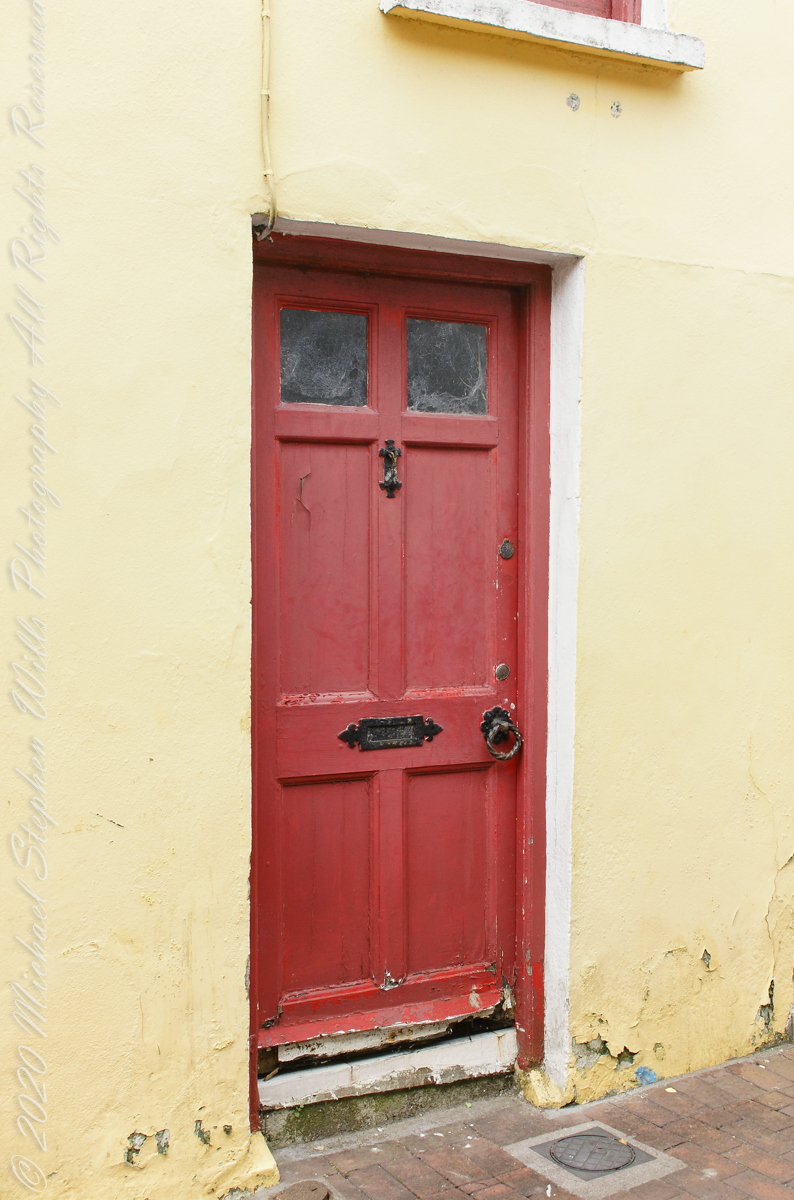
A cosy nook….
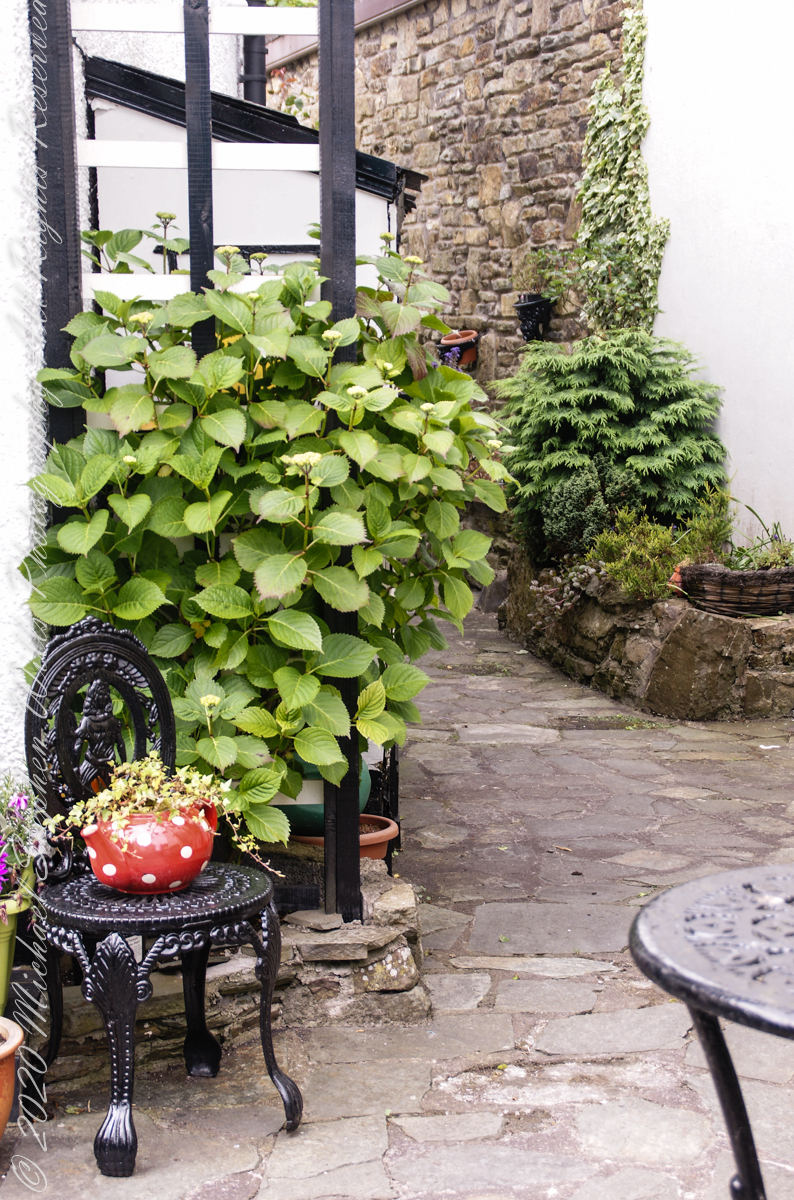
You must be logged in to post a comment.